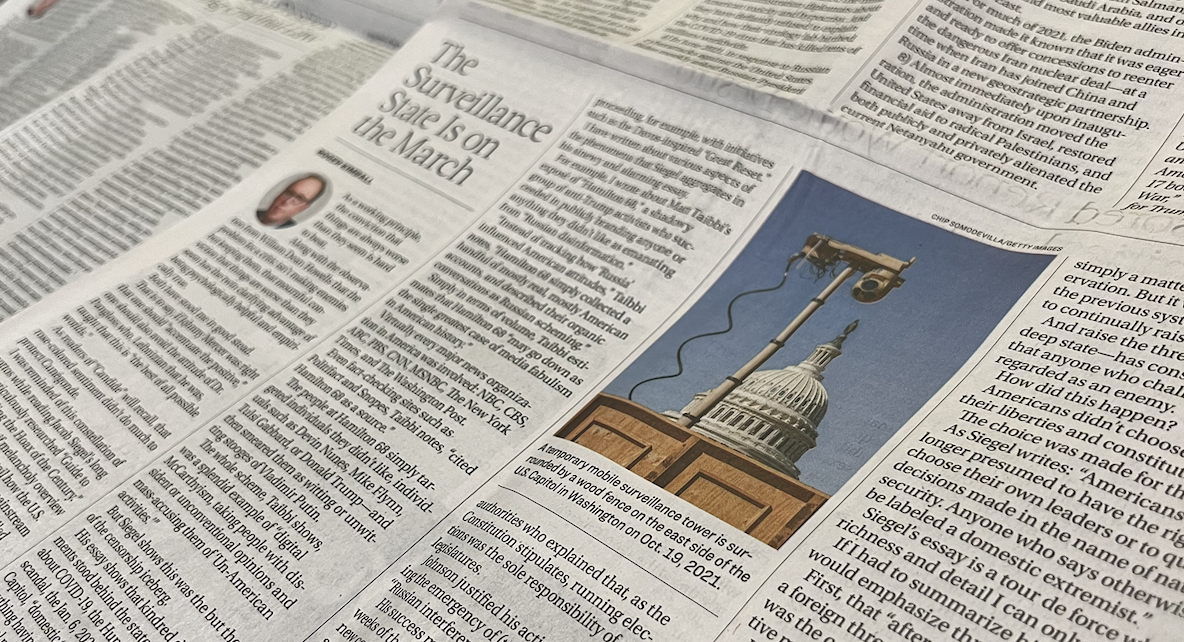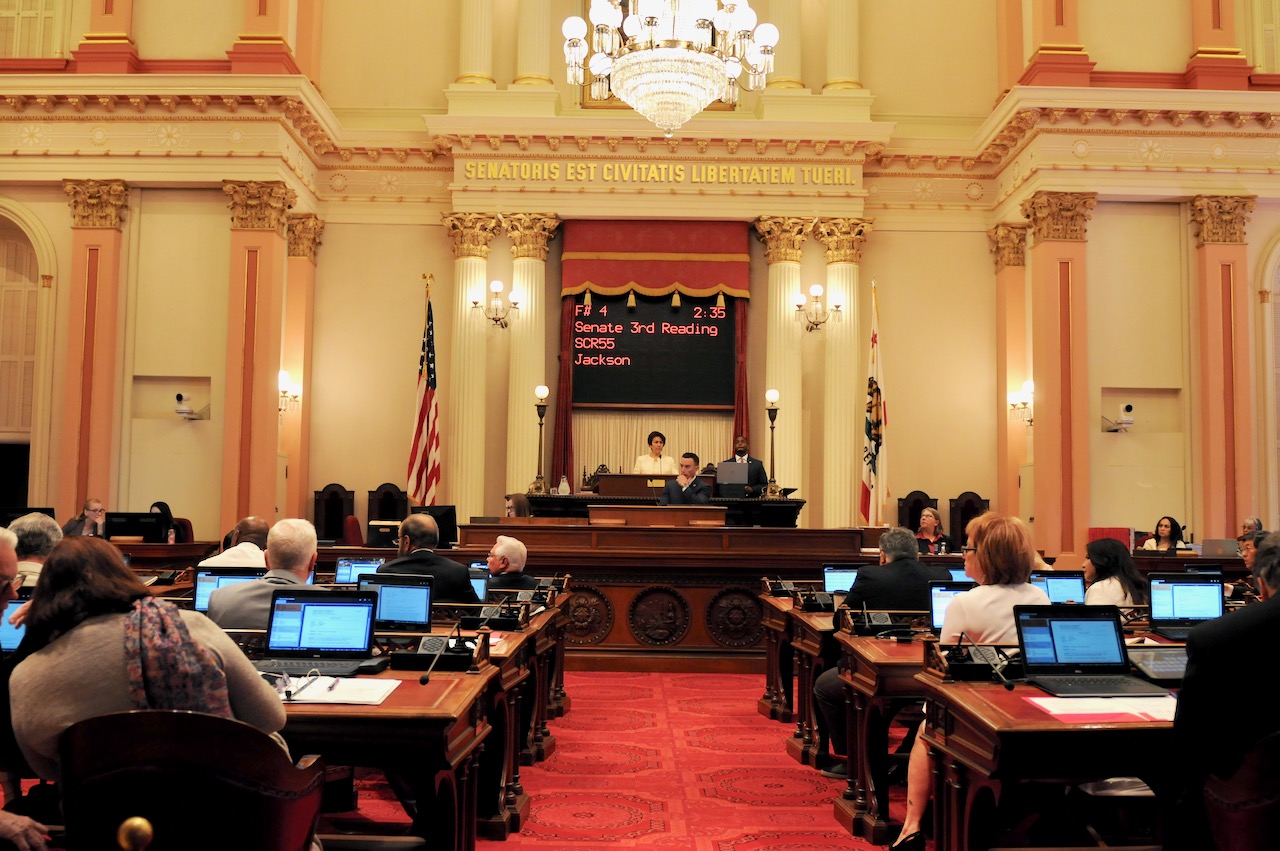
A newspaper. (Photo: Katy Grimes for California Globe)
Ending Pay for Play in California Newspapers
Only occasionally can you find out who is paying for the stories you read
By Thomas Buckley, September 23, 2023 7:36 am
Newspapers are broke. Broke broke. I’ll smoke just half this cigarette tonight so I’ll have half left for the morning broke.
The internet evaporated classified ad sales – once about half of a newspaper’s income – and it turns out that giving away the product for free on-line was not a terribly good business model.
Responding by gutting local news coverage – the only thing readers couldn’t get anywhere else – and alienating more than half (at least) of their readers with woker-than-thou pseudo-news were also not good ideas.
Just 15 or so years ago, a typical paper reaped a net – very very net – profit each year of between 10 and 17% (that’s why people paid a lot of money for them then in the late 1990s – oops.) Now they are valued more for their property than the paper itself.
Some papers have responded by becoming a toy a mega-rich person can use to yell progressive things at people, but even they can sometimes reach their financial limit (take the Los Angeles Times, which not only already sold its valuable downtown property and moved to El Segundo but seems to have been purchased based on the following business plan: “Honey, I’m giving you a billion dollars for graduation – have fun lighting it in fire!”)
Newspapers are broke and it’s their fault.
Not all, of course. The Wall Street Journal was highly criticized when, at the dawn of the internet, it said “to hell with that – you pay” and the New York Times panders exclusively to its high-income subscribers and never tells them something they might disagree with so they don’t cancel their subscription. They’re both dong just fine.
For most of the rest, though, it’s become a cold winter out there.
To address this shortfall, many papers have taken to accepting grant funds from non-profits, foundations, and non-governmental organizations. And not just from local general do-godderies, but from groups with very specific interests and opinions and desired outcomes.
Take the Sacramento Bee…please (sorry, couldn’t resist.) Their health care coverage is/was directly funded to the tune of about $175,000 a year (more than enough to rent a reporter) by the California Endowment, an uber-woke, highly political “non-profit” that was set up by the state to help provide access to affordable health insurance but instead plows almost all of its money into advocacy, outreach, and political groups.
CalMatters has a similar arrangement with the California Health Care Foundation, getting about $600,000 per year to pay for its health care beat.
These are just two examples of hundreds of such arrangements across the country – arrangements that are typically not at all mentioned by the newspaper. For example, George Soros dropped about $130 million on newspapers and media outlets – even some directly on high-profile media personalities – between 2016 and 2020.
That’s why if anyone ever says that maybe it’s not great that Soros is funding the election of horrible, dangerous, disastrous district attorney’s like LA’s George Gascon they are immediately called an anti-semite in the press.
In the long, long ago, newspapers got money from advertisers but they were kept at very arm’s length from the newsroom. That may sound suspicious, but it was actually true – papers told irked advertisers to pound sand, in part because of something called ethics, in part because they could afford to, and in part because if they were the only newspaper in town, where was the advertiser going to go to, anyway?
While CalMatters usually – they admit they miss at times – actually lets the reader know who is paying for coverage of a topic with a paragraph at the bottom of the story, the Bee does no such thing and did not respond to numerous previous attempts to comment on such clearly unethical behavior.
Occasionally, you can find out who is paying for the stories you read, somewhere, maybe, on the website but that’s not made easy. In fact, the quest can be similar to Arthur Dent’s travails in “The Hitchhiker’s Guide to the Galaxy” when he asked to see the permits for the road that was about to be put through his house:
“On display? I eventually had to go down to the cellar to find them.”
“That’s the display department.”
“With a flashlight.”
“Ah, well, the lights had probably gone.”
“So had the stairs.”
“But look, you found the notice, didn’t you?”
“Yes,” said Arthur, “yes I did. It was on display in the bottom of a locked filing cabinet stuck in a disused lavatory with a sign on the door saying ‘Beware of the Leopard.”
In other words, it’s an industry dirty secret – but there could be a way to at least bring the practice to light.
There are things called newspapers of public record, or adjudicated newspapers. These are the papers where you can go to print your public notices, name change, lien, etc. Not every publication is adjudicated and adjudication lists are created county-by-county or town by town or even at the state level (in California, it’s county-based; for example there are 10 adjudicated papers in Orange County, 5 in San Francisco, etc.)
Being adjudicated is important for a newspaper as the public notice fees are easy money.
So how about this – to retain adjudicated status, a newspaper must disclose somewhere in each article exactly who paid for it. In other words, a health care story in the Bee would have to end with “This was made possible by The California Endowment, a horribly leftist political nightmare that oozes woke in its sleep and is paying us to control our coverage of the health care.”
Or something like that.
True, the idea wouldn’t necessarily apply to news websites and it would involve legislation (essentially modifying various business codes) but it is legal, doesn’t take the paper’s money away, doesn’t impinge on free speech, and would at least be a tiny tiny step to help rebuild even a modicum of trust in a battered, bloodied, banal, bullshit – but undeniably necessary – industry.
Newspapers being honest with their readers – maybe the time has come.
- Benefit Fraud Problems and Solutions - November 7, 2024
- A Little Exit Poll - November 5, 2024
- Tomorrow’s Headlines Today! - November 5, 2024





Very enlightening, thank you Mr. Buckley.
As you know controlling public opinion has always been a way to control the masses.
With so much “journalism” available now days it is a mad scramble for this control and the power.
I agree with your solution.
If the journalist is not willing to disclose then they would lose their validity.
This is by no means a hostile question, but how does The California Globe survive?
What is the business model for you and others?
I love your reporting and commentary (Katy Grimes, Thomas Buckley and all the other young writers)
How does The Globe do it? How do you people put a roof over your head and food on the table.
I used to be a long time subscriber to The Bee, but just could not stand the bias anymore. Dan Walters, a brilliant commentator, was the only real adult at The Bee and he thankfully still writes and occasionally contributes to CalMatters. I now do subscribe to the WSJ, but probably will not subscribe to any more simply because I can’t afford it.
I must admit that I am GRATEFUL The Globe does not have a pay wall, but The Globe would be worth it.
Very valid question, Alex. I have wondered as much myself.
Yet another newspaper reporter, trying to pretend he’s a newspaper business executive… 🤬 I’ve been in the business 30 years every paper I had was profitable, including the one I own right now …if you know what you’re doing it’s not hard. It is absolutely the Internet that has caused this downfall much like the car did to the horse drawn carriage.. But to blame it on newspaper executives when you’re not a newspaper executives is talking out of your ass… Los Cerritos Community Newspaper
What makes you think that owning and running a left-wing rag like yours in a Marxist-run, one party state like Commiefornia and making a “profit” is difficult or even challenging? That’s the whole point of this article that you apparently missed @BH Publisher/Owner Not By Venture Capital. 🙁
Southern California community newspapers are a very niche market similar to the Long Beach Breeze, etc. Unfortunately, most markets such as Temecual are not robust enough to support so many community newspapers – it’s a Los Angles area thing. Your experience is in somewhat of a bubble.
As far as I can recall, the Sacramento Bee has always been a liberal paper. It’s been in steady decline for decades now, however fifteen years ago its content was, more or less, still coherent.
Thank you, Mr. Buckley. Your article does help to explain why the Bee has become so ridiculous.
Great article. I remember the Bee and their horribly slanted editorials posted below a grotesque drawing of a republican.
I’m sad they have lasted this long. News rabies is dangerous to everyone who touches it.
Most newspapers are controlled by the CIA, which directs ad revenue from its proprietaries in exchange for fake journalists to act as mockingbirds to put out propaganda. Then, there are the legal notice laws such as for probate. This props up newspapers, but it means they never criticize government because the state could always repeal the legal notice laws and just create a fictitious business name registry on the internet.